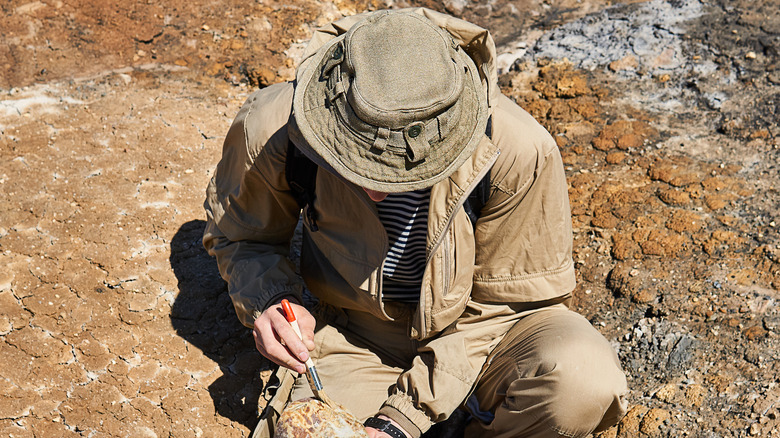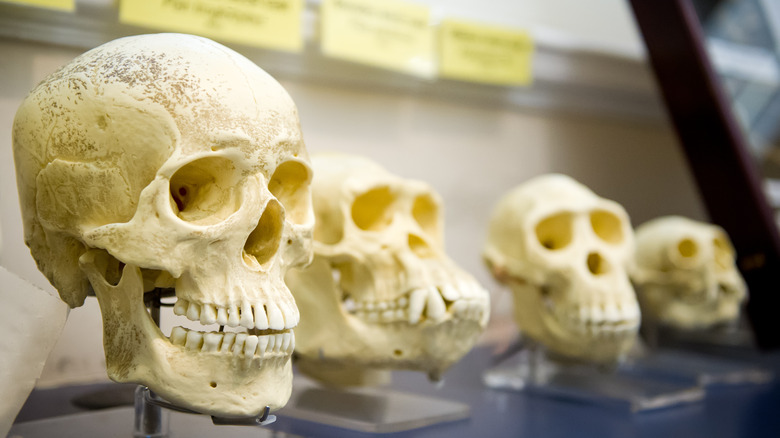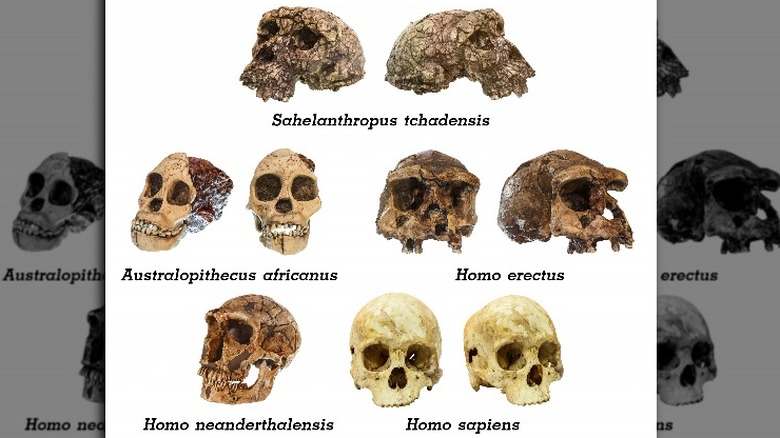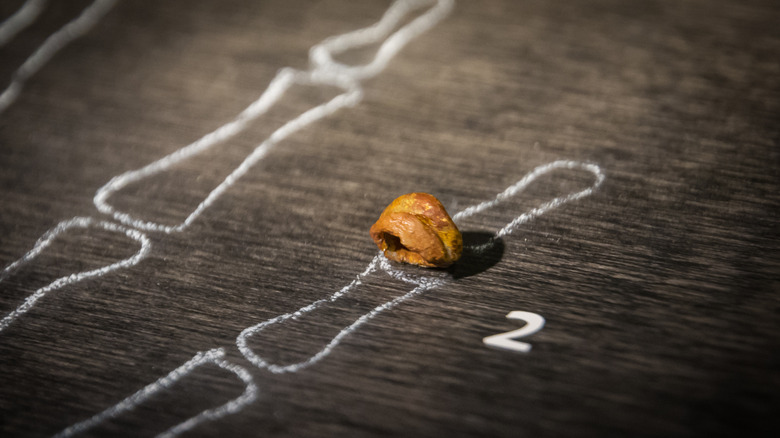The Untold Truth Of The Dragon Man, Homo Longi
In 1933, a construction worker building a bridge in the provincial city of Harbin, China, stumbled upon a well-preserved skull, but it wasn't until 2018 that the skull was turned over to paleontologist Qiang Ji of the Hebei GEO University to be studied. Per Archaeology, an examination of the skull revealed that it is at least 146,000 years old, based on uranium series dating. It has thick brow ridges, squarish eye sockets, and a wide mouth.
The cranium was found in Heilongjiang, which translates to Dragon River — thus the find was named Dragon Man. According to EarthSky, the skull is the largest Homo skull that has ever been discovered to date, and although it shares some characteristics with modern human skulls, there are still aspects that make it completely different. As professor Qiang Ji stated, "While it shows typical archaic human features, the Harbin cranium presents a mosaic combination of primitive and derived characters setting itself apart from all other previously named Homo species."
How the Dragon Man lived
According to the scientists involved in the study of the Dragon Man's cranium, the skull belonged to a man who was around 50 years old during the Middle Pleistocene age, some 126,000 to 770,000 years ago (via TRT World.) The Dragon Man's large size allowed him to adapt to the harsh environmental conditions during his time. He most likely was able to travel to different parts of Asia.
Researchers believe that the Dragon Man was part of a small community that lived on floodplains and forest areas. Their living conditions and behaviors are just like those of Homo sapiens, according to paleoanthropologist Xijun Ni, as reported by Sci News. "They hunted mammals and birds, and gathered fruits and vegetables, and perhaps even caught fish," he said. They also consider the possibility of the Homo sapiens and Homo longi interacting with one another. Three papers have already been published on the study of the Dragon Man, which can be found in the journal The Innovation (posted at Cell).
Is the Dragon Man a new species of humans?
Based on the research of the Homo longi cranium, information suggests a completely new human species has been discovered. Different human species have been known to exist side-by-side some 100,000 years ago, including the Homo sapiens, Neanderthals, and the Denisovans (via Natural History Museum.) The Dragon Man, however, may be different from all those mentioned.
The Dragon Man's cranium shares similarities with modern humans, such as its large brain capacity, but researchers' analysis suggests the Dragon Man has a lineage that makes it a closer relative to modern humans than Neanderthals. Since the Homo neanderthalensis was discovered in 1829, it has been scientifically proven to be the closest link to today's humans. Per Smithsonian National Museum of Natural History, Neanderthals made use of sophisticated tools and were skilled in building shelters, making fires, and hunting. Now, the discovery of the Dragon Man may add another link to the evolution of the human species.
The human family tree
Determining the relationships between discovered fossils and how they relate to human evolution is a difficult task, especially so since DNA samples are not readily available because of the fossils' degeneration over time. This is when scientists and researchers turn to other information to study evolutionary relationships and the human family tree.
The fact is, the human family tree is vast but how big and how far it branches out has sparked a debate among researchers around the world. According to another Smithsonian post, human fossils that have so far been discovered may only be a fraction of the evolution of man. However, the debate is not about the human evolution itself, but more on who goes where on the family tree. The same goes for the Dragon Man, who some consider a new species. Others, however, say that the fossil is a Denisovan, a close relative of Neanderthals (via American Association for the Advancement of Science.)
Is the Dragon Man a Denisovan?
Some paleoanthropologists say that the fossil found in Harbin isn't a new species, but instead a Denisovan — a human ancestor from Asia (via Science Mag). While this is possible, scientists are not able to ascertain it at this time.
Denisovan fossils were discovered in Siberia's Denisova Cave, thus the name. However, fossils that were found were only fragments, mostly small pieces of finger and jaw bones, as well as teeth, per Nature. The Denisova fossils that have so far been unearthed cannot be used to reconstruct a complete skull, which prevented researchers from creating a full anatomical structure of the species. However, a Denisovan sketch was made based on the DNA taken from the fossils.
Based on the anatomical reconstruction of the Dragon Man's facial features, some scientists believe that he was indeed a Denisovan. Qiang Ji of the Dragon Man research team says that statement is neither right nor wrong, as further study needs to be made for confirmation (via Sixth Tone).
The next stage for the Dragon Man
According to paleontologist Qiang Ji in an interview with Sixth Tone, although his study calls the Dragon Man a new species, that may change in the future after further studies are done. The Harbin cranium has only been studied since 2018 and more discoveries have yet to be made. If the team finds evidence of the Dragon Man being part of an already-known species of humans, they will change the Dragon Man's designation accordingly.
The next step is for the team to extract DNA from the skull for testing. However, Ji doesn't have a positive outlook on the test. "Honestly, the dragon man bones are so old, I have little confidence in being able to extract ancient genetic information from the skull," he said. According to CNN, the Dragon Man's cranium was found with one tooth intact, which is most likely where the DNA sample will come from.
Ji says the team will continue their efforts in studying the Dragon Man by searching for more fossils where the cranium was discovered. They are planning to dig in four specific regions in China in hopes of finding more Homo longi remains that may aid in future research. For now, they have only started the long process of discovering what may be our closest ancient ancestor.





